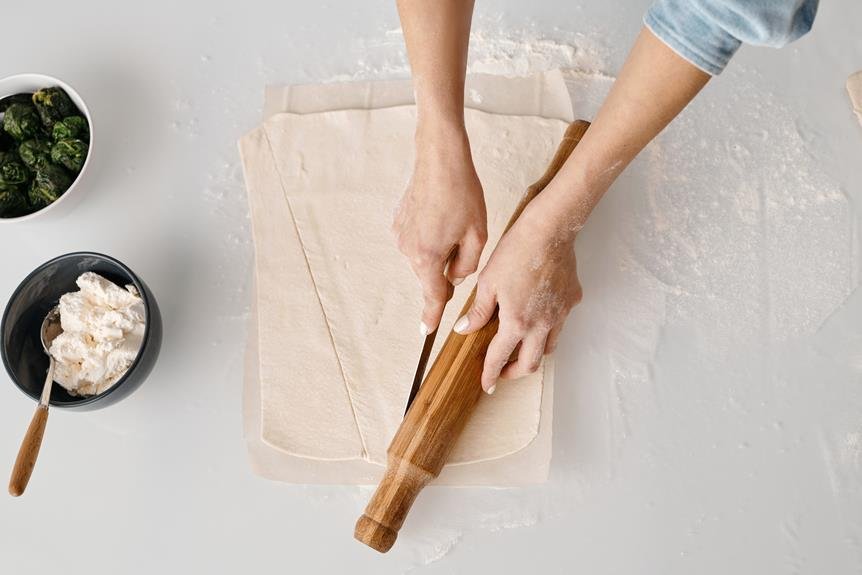Have you ever wondered how long mold testing takes?
In this article, we will provide you with a detailed and objective overview of the factors that can affect the duration of mold testing.
From preparation to the actual testing process, as well as waiting for the results, we will guide you through each step.
By understanding the timeline, you will be better equipped to take necessary actions based on the test results.
So, let's dive into the world of mold testing and its timing.
Key Takeaways
- The duration of mold testing can be affected by factors such as the size of the area being tested, the number of samples needed, the complexity of the mold issue, and other accompanying factors.
- Before mold testing, it is important to clear the area being tested, turn off HVAC systems, inform occupants about the testing, gather relevant information, and ensure a smooth and efficient process.
- The actual mold testing process involves visual inspection for signs of mold growth, the use of specialized equipment to detect hidden moisture sources, collection of air samples, surface samples, or bulk samples, and sending the collected samples to a laboratory for analysis.
- Waiting for mold test results can be accompanied by impatience, anxiety, relief, or concern depending on the results. It is important to remain patient and calm while waiting for the results.
Factors Affecting Mold Testing Duration
Factors that can affect how long mold testing takes include:
- The size of the area being tested: Larger areas require more time for inspection, sampling, and analysis. This is because a larger area may have more hidden mold colonies that need to be identified and sampled.
- The number of samples needed: Each sample needs to be carefully collected and analyzed, which takes time. The more samples required, the longer the testing process will take.
- The complexity of the mold issue: If the mold problem is widespread and involves multiple types of mold, it may require more extensive testing and analysis, leading to a longer testing period.
- Other factors accompanying the mold issue: If the mold issue is accompanied by other factors such as water damage or structural issues, the testing process may take longer to assess the full extent of the problem.
Preparing for Mold Testing
To ensure a smooth and efficient mold testing process, there are several steps you should take in preparing for the inspection.
- Clear the area: Before the mold inspector arrives, make sure to clear the area being tested. Remove any furniture, personal items, or clutter that may obstruct the inspector's access to the walls, ceilings, and other surfaces.
- Turn off HVAC systems: It's important to turn off any heating, ventilation, and air conditioning (HVAC) systems in the area being tested. This will prevent the spread of mold spores through the air conditioning ducts, which can contaminate other parts of the building.
- Inform occupants: Notify all occupants of the building about the upcoming mold testing. Advise them to stay away from the testing area and to avoid disturbing any visible mold growth before the inspection.
- Gather relevant information: Collect any documentation or information related to previous mold issues, water damage incidents, or any other relevant history. This will provide the inspector with valuable insight into the potential sources and extent of the mold problem.
The Actual Mold Testing Process
During the mold testing process, the inspector will carefully examine the area for signs of mold growth and collect samples for further analysis. This process typically involves several steps to ensure an accurate assessment of the mold presence. First, the inspector will visually inspect the area, looking for any visible signs of mold, such as discoloration or water damage. They will also use specialized equipment, such as moisture meters and thermal imaging cameras, to detect hidden moisture sources that may contribute to mold growth.
Once the visual inspection is complete, the inspector will proceed with collecting samples for laboratory analysis. This is done by taking air samples, surface samples, or bulk samples, depending on the situation. Air samples are collected using a specialized pump that draws air into a cassette or petri dish. Surface samples involve swabbing or tape-lifting the suspected mold surface to collect spores. Bulk samples, on the other hand, involve removing a piece of the material affected by mold, such as drywall or carpet.
The collected samples are then sent to a laboratory for analysis. In the laboratory, the samples are cultured or examined under a microscope to identify the type and quantity of mold present. The results of the analysis will provide valuable information about the extent of the mold problem and the potential health risks associated with it.
The table below summarizes the steps involved in the mold testing process:
| Step | Description |
|---|---|
| 1. | Visual inspection for signs of mold growth |
| 2. | Use of specialized equipment to detect hidden moisture sources |
| 3. | Collection of air samples, surface samples, or bulk samples |
| 4. | Sending collected samples to a laboratory for analysis |
| 5. | Laboratory analysis to identify type and quantity of mold |
Waiting for Mold Test Results
Once you have completed the mold testing process, you can expect to receive the results within a specific timeframe. The waiting period can be an anxious time, as you eagerly await the results that will determine the presence or absence of mold in your home.
Here are four emotional responses you may experience while waiting for mold test results:
- Impatience: As you anticipate the results, you may find yourself growing increasingly impatient. The uncertainty can be frustrating, and you may feel the need for answers sooner rather than later.
- Anxiety: The possibility of mold in your home can be a source of anxiety. Waiting for the test results can exacerbate these feelings, as you worry about the potential impact on your health and property.
- Relief: If you have been experiencing symptoms or have noticed signs of mold, receiving negative test results can provide a sense of relief. It means that your home is mold-free and you can focus on other potential causes for your concerns.
- Concern: On the other hand, positive test results can elicit a sense of concern. It means that mold is present in your home, and you'll need to take appropriate action to address the issue and prevent further damage.
Remember to stay patient and calm during the waiting period. Once you receive the results, you can take the necessary steps to ensure your home is safe and healthy.
Taking Action Based on Test Results
Now that you have received your mold test results, it's time to take action based on the findings. The first step is to carefully review the report provided by the mold testing company. Pay close attention to the types of mold identified, as well as their concentrations and locations within your property. This information will help you determine the severity of the mold problem and prioritize the necessary actions.
If the mold levels are low and confined to a small area, you may be able to address the issue on your own. Start by wearing appropriate protective gear, such as gloves and a mask, before attempting any mold removal. Use a solution of water and detergent to clean the affected surfaces, and ensure that they're thoroughly dried to prevent further mold growth.
However, if the mold levels are high or if the affected area is extensive, it's recommended to seek professional assistance. A certified mold remediation specialist can develop a comprehensive plan to safely and effectively remove the mold from your property. They have the necessary equipment and expertise to address the issue thoroughly, minimizing the risk of cross-contamination and ensuring the mold is properly eradicated.
Regardless of the severity of the mold problem, it's essential to address the underlying moisture issue to prevent future mold growth. Identify and fix any leaks or sources of excess moisture, such as plumbing leaks or inadequate ventilation.
Conclusion
In conclusion, the duration of mold testing can vary depending on several factors including the size of the area being tested, the number of samples taken, and the testing method used.
Preparing for the testing process involves ensuring the area is properly ventilated and accessible for the testing team.
During the actual testing, samples are collected and analyzed for the presence of mold.
After the testing, waiting for the results may take a few days.
Based on the results, appropriate actions can be taken to address any mold issues.






0 Comments